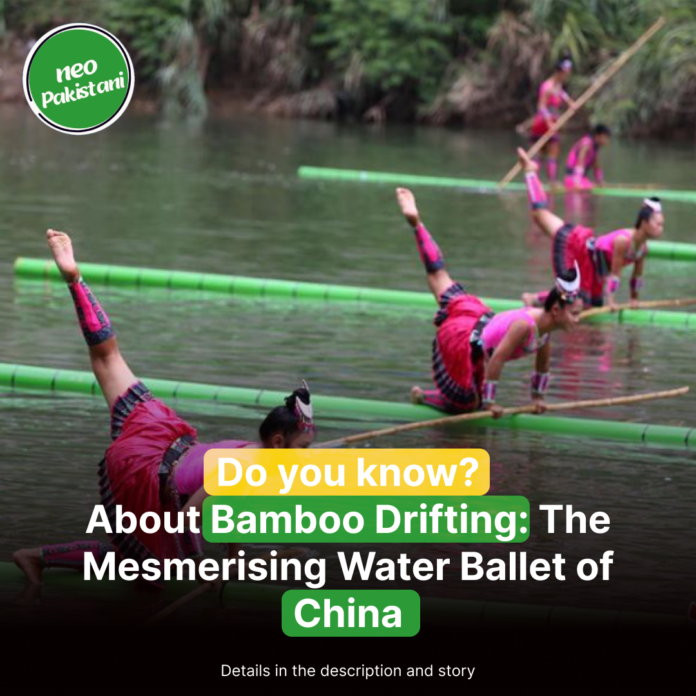Bamboo drifting, also known as single-bamboo drifting, is a captivating traditional art form practiced in the Chishui River basin of Guizhou Province, China. This unique blend of athleticism, balance, and grace combines elements of dance and water navigation, creating a mesmerizing spectacle that has fascinated audiences for centuries.
Origins and History
The roots of bamboo drifting can be traced back over 2,000 years to the Qin and Han dynasties. Initially, it served as a practical means of transportation for the people living along the Chishui River. However, over time, it evolved into an art form, captivating both performers and spectators alike.
The Dance on Water
1. The Bamboo Log
At the heart of bamboo drifting lies a simple yet essential prop: the bamboo log. Crafted from a single piece of bamboo, it serves as a floating platform for the performers. The challenge lies in maintaining balance while standing on this narrow surface.
2. Athleticism and Balance
Performers, often dressed in traditional attire, step onto the bamboo log. Their movements are a delicate balance between strength, agility, and poise. They execute intricate dance steps, twirls, and spins—all while gliding gracefully across the water’s surface.
3. The Water Ballet
Imagine a ballet dancer pirouetting on a tightrope, but instead of a rope, it’s a buoyant bamboo log. The performers create a water ballet, their bodies swaying in harmony with the gentle currents. Each movement requires precision and control, as any misstep could send them plunging into the water.
4. Cultural Significance
Bamboo drifting is more than just a performance; it embodies the spirit of the region. It reflects the resilience, resourcefulness, and creativity of the people who once relied on bamboo logs for survival. Today, it stands as a testament to their cultural heritage.
Challenges and Preservation
1. Risk and Skill
Performing bamboo drifting is not without risks. The water’s unpredictability, coupled with the delicate balance required, demands exceptional skill. Artists spend years honing their abilities, mastering the art of movement on water.
2. Environmental Concerns
As modern transportation replaced bamboo logs, the art form faced decline. Environmental factors, such as water pollution and habitat degradation, further threatened its survival. Efforts are now underway to protect the Chishui River ecosystem and preserve this ancient tradition.
The Future of Bamboo Drifting
Despite the challenges, bamboo drifting continues to captivate audiences. Festivals and performances celebrate its beauty, and artists strive to pass down their knowledge to the next generation. As we watch these dancers glide across the water, we witness a delicate balance between tradition and innovation—a dance that transcends time and connects us to the ancient rhythms of China’s past12.
So next time you see a performer gracefully pirouetting on a bamboo log, remember that beneath their feet lies a rich history—a dance that whispers tales of resilience, culture, and the enduring spirit of the Chishui River.


